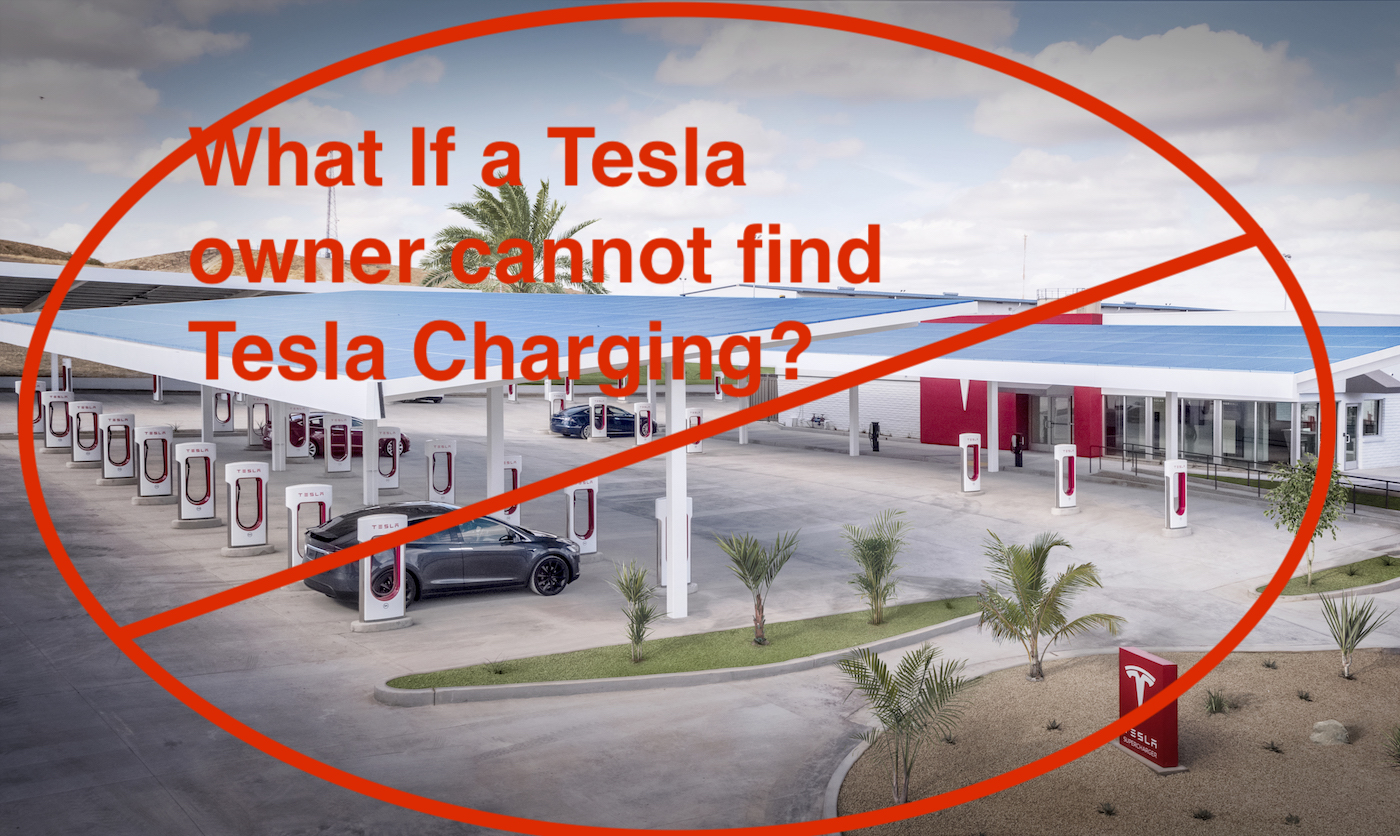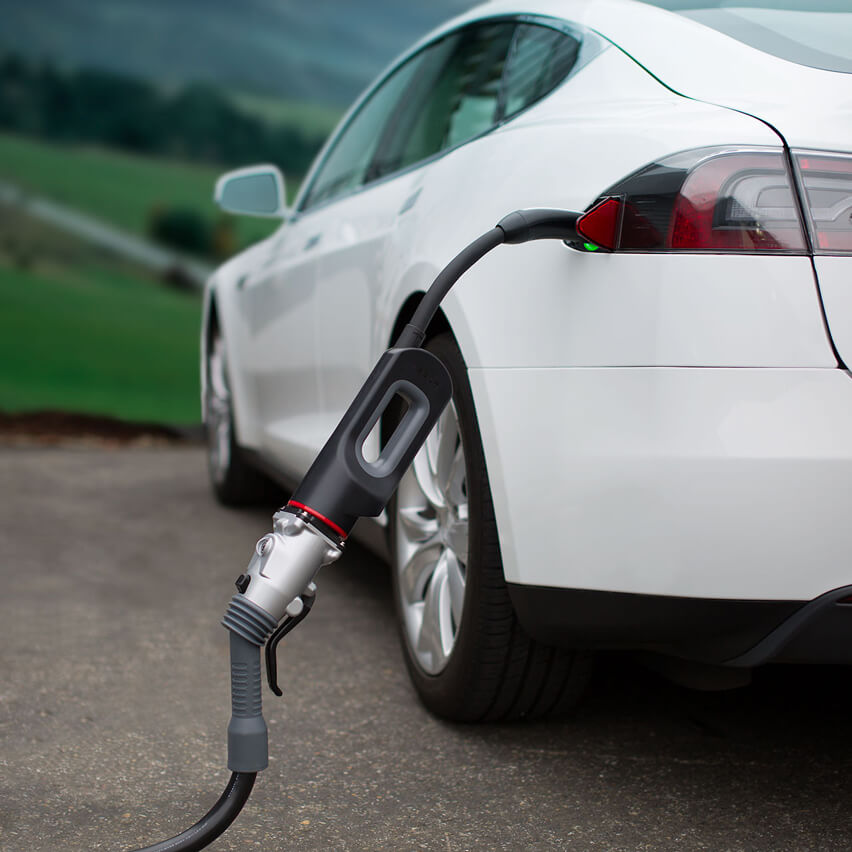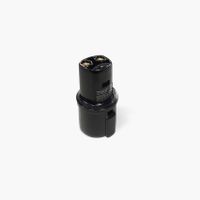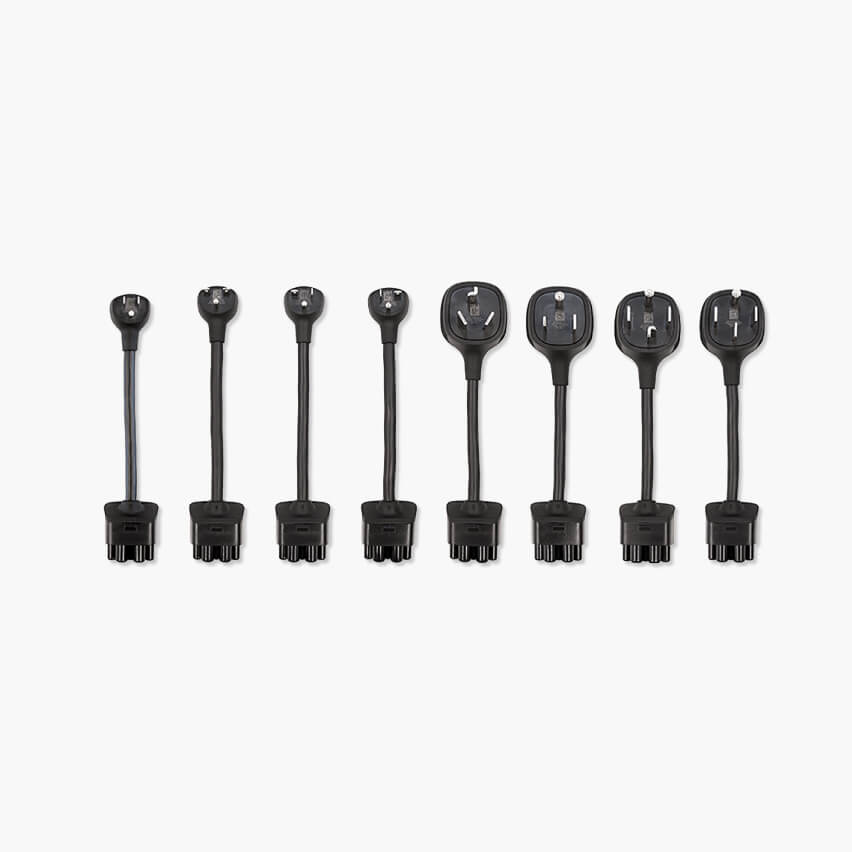Last Update: October 9, 2019

Getting a Tesla electric car to run out of power requires that the driver has ignored many warnings from the car. That's because the car is constantly tracking if the remaining range in the car is enough to reach the destination. If the remaining range falls below the distance remaining to travel, the car starts giving warnings to charge the car. It gives other warnings if the car is driven outside the coverage area of known charging stations.

In that state the car attempts to answer the question "what Tesla charging stations are near me"? That is, tapping the Show Chargers button lists nearby charging stations.
In the normal case a Tesla vehicle owner uses the navigation system to locate charging stations. In normal trip planning, the navigation system shows charging stations along the way, and seamlessly integrates charging sessions into trip plans that require charging.
But the question is, what does a Tesla car owner do if there are no nearby Tesla charging stations?
Getting into that situation means ignoring warnings from the navigation system. Perusing Tesla's maps of Supercharger and Destination Charger locations shows some gaps. For example a large area of North Dakota, Montana and Canada currently have no Supercharger and no Destination charger locations.
The Tesla car owner may legitimately have a destination where this is true. a Tesla owner wants to attend a demonstration against the natural gas pipelines being built through North Dakota? What then?
In other words, Tesla has not built its charging infrastructure sufficiently to cover all possible locations. As good as their system is, there are destinations without any nearby Tesla charging service.
The Tesla vehicle owner has to learn how to operate outside the box Tesla has built.
In other words, Tesla has you covered so long as you stay within the box defined by nearby Supercharger and Destination Charger locations. To go outside that box you must learn how to access electricity through other, non-Tesla, charging connectors.
Electricity is everywhere. All electric vehicle owners must learn how to access that electricity to drive into areas that have inadequate charging support. For more on this see Can you drive an electric car away from charging network coverage areas?
Public charging station, private charging station, or power outlet
Every electric car owner has this decision to make: Do I charge at a public charging station, a private charging station, or at a power outlet.
Tesla makes adapters available so their electric cars can charge in these circumstances:
- CHAdeMO or Combo Charging System - these DC fast charging systems are supported by the other automakers, and the 3rd party charging networks have installed many thousands of these stations around the world.
- J1772 charging stations - these support single phase AC charging and are even more widely available than the CHAdeMO or CCS stations
- NEMA 14-50 or other normal power outlets - Tesla sells adapters for the Universal Mobile Connector so it can be used with a wide variety of normal power outlets
The following sections will clarify how this choice plays out for a Tesla car owner.
Using Plugshare or other charging map
There are plentiful charging stations operated by non-Tesla charging networks. Because Tesla makes available charging adapters for every charging possibility, these non-Tesla stations are usable by Tesla cars. But in case this information is not made available to Tesla car owners, any of several 3rd party applications (like PlugShare) can help find such charging stations.
- Smart-phone apps for finding electric car charging station networks
- Known electric car charging networks around the world
It's just a matter of
- Using one of the charging station maps - either one associated with a charging network - or a 3rd party map that shows all charging stations
- Entering the charging station location into the Tesla navigation system
- Letting the car direct you to the location
- Upon arriving at the charging station, use the appropriate adapter
For this strategy to work, the Tesla car owner of course has to buy the adapters s/he thinks they need.
Earlier I noted that Montana, North Dakota and parts of Canada have no Tesla charging stations of any kind. PlugShare shows plenty of J1772 and NEMA 14-50 outlets available throughout those areas. That Tesla owner I mentioned earlier could make it into North Dakota using J1772 or NEMA 14-50.
Recharging a Tesla car at CHAdeMO or Combo Charging System stations

The Tesla CHAdeMO Adapter lets a Tesla car recharge at CHAdeMO stations. This adapter works with the Tesla cars using the American Supercharger connector.
I understand that in Europe a CCS adapter is available, and that more recently Tesla has put CCS ports in Tesla cars sold in Europe. Therefore in Europe a Tesla owner can use a Combo Charging System station without requiring an adapter.
Recharging a Tesla car at J1772 charging stations

Tesla supplies a J1772 adapter with every car they sell, letting a Tesla car recharge at regular charging stations. The charging rate is limited to about 25 miles gained per hour of charging. While a Tesla owner might be impatient with that charging rate, it is better than gaining 0 miles of range per hour of charging.
In Europe a different charging connector is used than this J1772 plug. It serves the same purpose, supplying single phase AC at a rate of 6-10 kiloWatts. Since Tesla now equips its cars in Europe with a Combo Charging System port, they can also use the European equivalent to J1772 with no adapter.
Recharging a Tesla car at NEMA 14-50 or other power outlets

These adapters work with the Universal Mobile Connector enabling it to plug into normal power outlets. The Tesla car owner simply buys the matching adapters they need.
NEMA 14-50 outlets are particularly useful in North America because many "RV Parks" (campgrounds) have these outlets. They supply close to a 9 kiloWatt charging speed which is good for about 30 miles of range per hour of charging. Again, that is better than 0 miles of range per hour of charging.
The universal fallback for all electric car owners - tow trucks
Sometimes an electric car owner must bite the bullet and call for a tow truck. Simply ask the tow truck driver to take you to the nearest charging station.
See When will the car companies make a flat-towable electric car?


